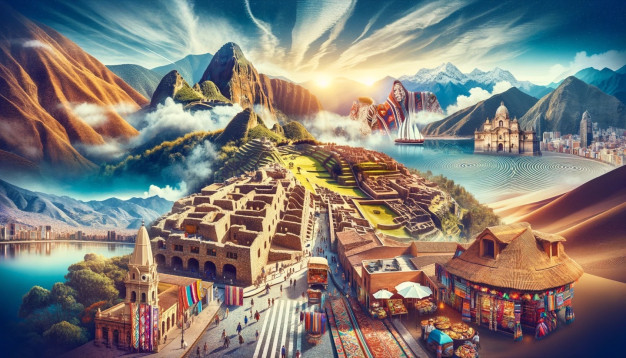
Are you ready to embark on an adventure filled with ancient wonders and culinary delights?
In this Peru Travel Guide, we’ll take you on a journey through vibrant cities, mystical ruins, and breathtaking landscapes.
Say goodbye to the hassle of trip planning and let us be your guide.
Let’s get started
Essentials:
- Diverse Landscapes, Ancient Ruins, and Vibrant Cities: Peru offers a rich tapestry of landscapes, from the Andes to the Amazon, and a wealth of archaeological wonders.
- Best Time to Visit: Dry Seasons, Pleasant Weather: The best time to visit Peru is during the dry seasons, from May to September, for optimal weather conditions.
- Visa Requirements, Entry Procedures, and Currency: Familiarize yourself with Peru’s visa requirements, entry procedures, and local currency.
- Must-See Attractions: Lima, Machu Picchu, Amazon: Don’t miss Lima’s historic center, the mystical ruins of Machu Picchu, and the pristine beauty of the Amazon rainforest.
- Peruvian Cuisine: Flavorsome Delights: Indulge in the diverse and delectable Peruvian cuisine, known for its ceviche, lomo saltado, and Pisco Sour.
- Transportation: Domestic Flights, Buses, Taxis: Navigate Peru with ease using domestic flights, buses, and taxis for intercity travel.
- Safety: Basic Precautions, Aware of Surroundings: Practice basic safety precautions and be mindful of your surroundings while exploring Peru.
- Packing Essentials: Layers, Comfortable Shoes, Sunscreen: Pack essentials such as layers of clothing, comfortable shoes, sunscreen, and insect repellent.
- Sustainable Travel: Support Local Communities: Embrace sustainable travel practices and support local communities during your visit.
- Language Tips: Basic Spanish Phrases, Communication: Learn basic Spanish phrases to enhance communication with locals.
- Unforgettable Memories, Lifetime Adventure: Prepare for a journey in Peru that will create unforgettable memories and a lifetime of adventure.
Getting Started
Before we dive into the specific regions and attractions, let’s cover some essential information to help you plan your trip to Peru.
Overview of Peru
Peru is located on the western coast of South America and is bordered by Ecuador, Colombia, Brazil, Bolivia, and Chile. It boasts a rich history that dates back thousands of years, with civilizations like the Inca leaving their mark on the landscape.
Best Time to Visit Peru
Peru’s climate varies greatly depending on the region. Generally, the best time to visit is during the dry season, which typically runs from May to September. However, it’s important to note that the weather can be unpredictable, especially in mountainous areas, so be prepared for some rain even during the dry season.
Entry Requirements and Visa Information
To enter Peru, most travelers need a valid passport. Citizens from many countries, including the United States, Canada, the United Kingdom, Australia, and the European Union, can enter Peru as tourists without a visa for up to 183 days. However, it’s always advisable to check the latest visa requirements before your trip.
Currency and Money Matters
The official currency of Peru is the Peruvian Sol (PEN). It’s recommended to carry a combination of cash and credit/debit cards. ATMs are widely available in major cities and tourist areas. It’s also a good idea to inform your bank about your travel plans to avoid any issues with card usage.
Now that we have the basics covered, let’s explore the different regions and highlights of Peru.
Exploring Lima
As the capital city of Peru, Lima is often the starting point for many travelers. It’s a vibrant and bustling metropolis that seamlessly blends colonial architecture with modern amenities.
Welcome to Lima
Upon arrival in Lima, you’ll be greeted by a vibrant city filled with energy and charm. Lima offers a perfect mix of history, culture, and culinary delights. From the bustling streets of the Historic Center to the trendy neighborhoods of Miraflores and Barranco, there’s something for everyone in Lima.
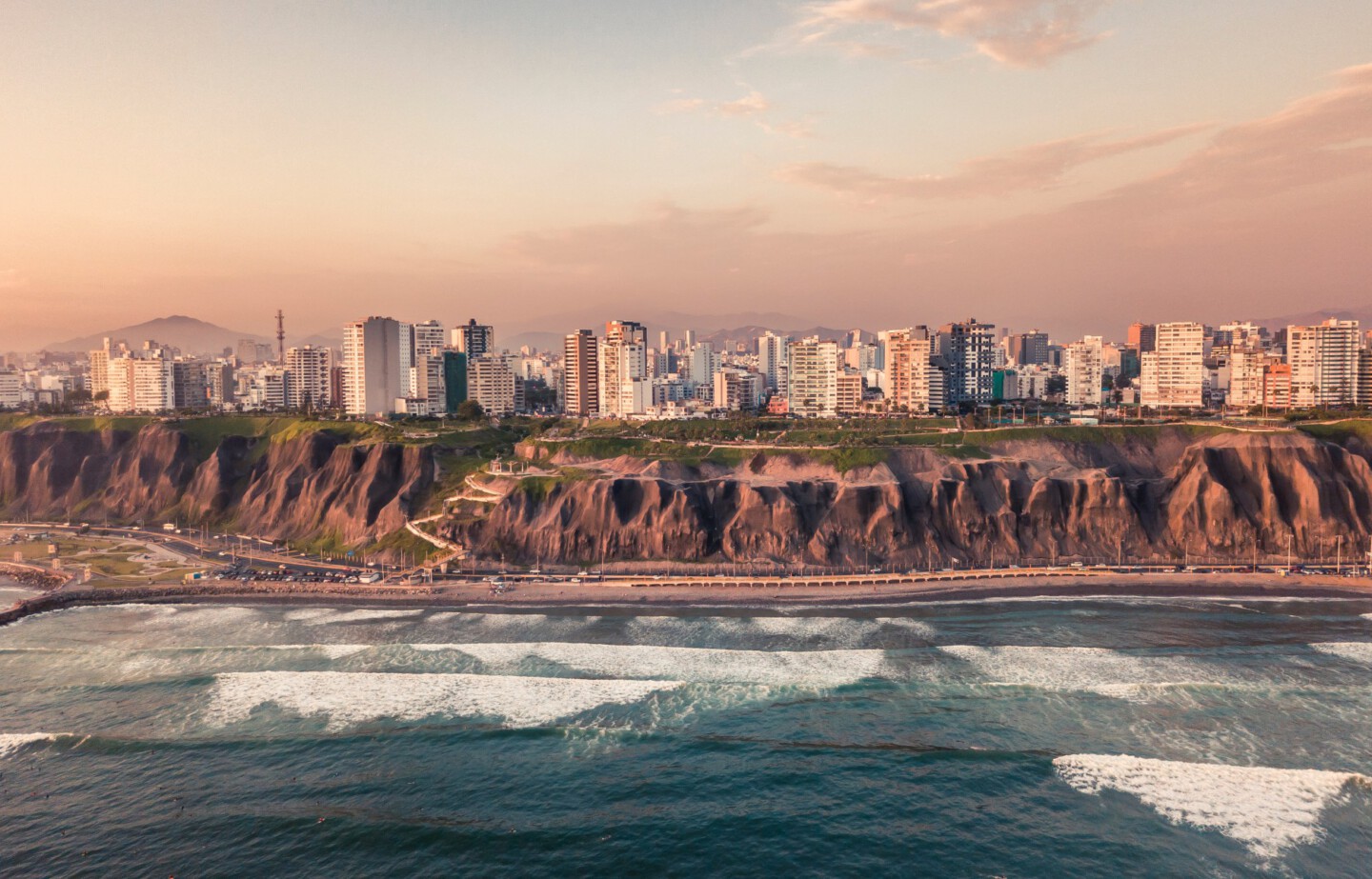
Must-See Attractions in Lima
Lima is home to several must-see attractions that showcase its rich history and cultural heritage.
Historic Center of Lima
Step back in time as you explore the Historic Center of Lima, a UNESCO World Heritage site. Marvel at the beautifully preserved colonial architecture, visit the impressive Plaza de Armas, and explore historic landmarks such as the Cathedral of Lima and the Government Palace.
Miraflores
Known for its stunning coastal views, Miraflores is a popular neighborhood in Lima. Take a leisurely stroll along the Malecon, a picturesque cliffside boardwalk, and enjoy panoramic views of the Pacific Ocean. Don’t miss Parque del Amor, a romantic park with a famous statue of lovers.
Barranco
Barranco is Lima’s bohemian district, known for its artistic vibe and lively nightlife. Explore its colorful streets adorned with street art, visit art galleries, and enjoy live music at local bars and clubs. The Bridge of Sighs and the Bajada de los Baños are iconic landmarks worth exploring.
Lima’s Culinary Scene
Peru is renowned for its gastronomy, and Lima is the perfect place to indulge in its culinary delights.
Traditional Peruvian Dishes
Treat your taste buds to traditional Peruvian dishes such as ceviche (a marinated seafood dish), lomo saltado (stir-fried beef), and causa (a layered potato dish). Don’t forget to try the national beverage, Pisco Sour, a delicious cocktail made with Pisco, a local grape brandy.
Top Restaurants and Food Markets
Lima boasts a vibrant food scene with numerous world-class restaurants. From fine dining establishments to bustling food markets like Mercado Surquillo and Mercado de Magdalena, you’ll find a variety of flavors and culinary experiences to satisfy your cravings.
Transitional Sentence: After immersing yourself in the delights of Lima, it’s time to explore the coastal delights of Northern Peru.
Coastal Delights: Northern Peru
Heading further north along the coast of Peru, you’ll discover a treasure trove of historical sites, natural wonders, and pristine beaches.
Trujillo and Chan Chan
Trujillo, known as the “City of Eternal Spring,” is a charming colonial city with a rich cultural heritage. Explore its beautiful Plaza de Armas, visit the impressive Trujillo Cathedral, and wander through its colorful streets lined with well-preserved colonial mansions.
Just outside Trujillo, you’ll find Chan Chan, the ancient capital of the Chimú civilization. This UNESCO World Heritage site is the largest adobe city in the world and offers a fascinating glimpse into the ancient past.
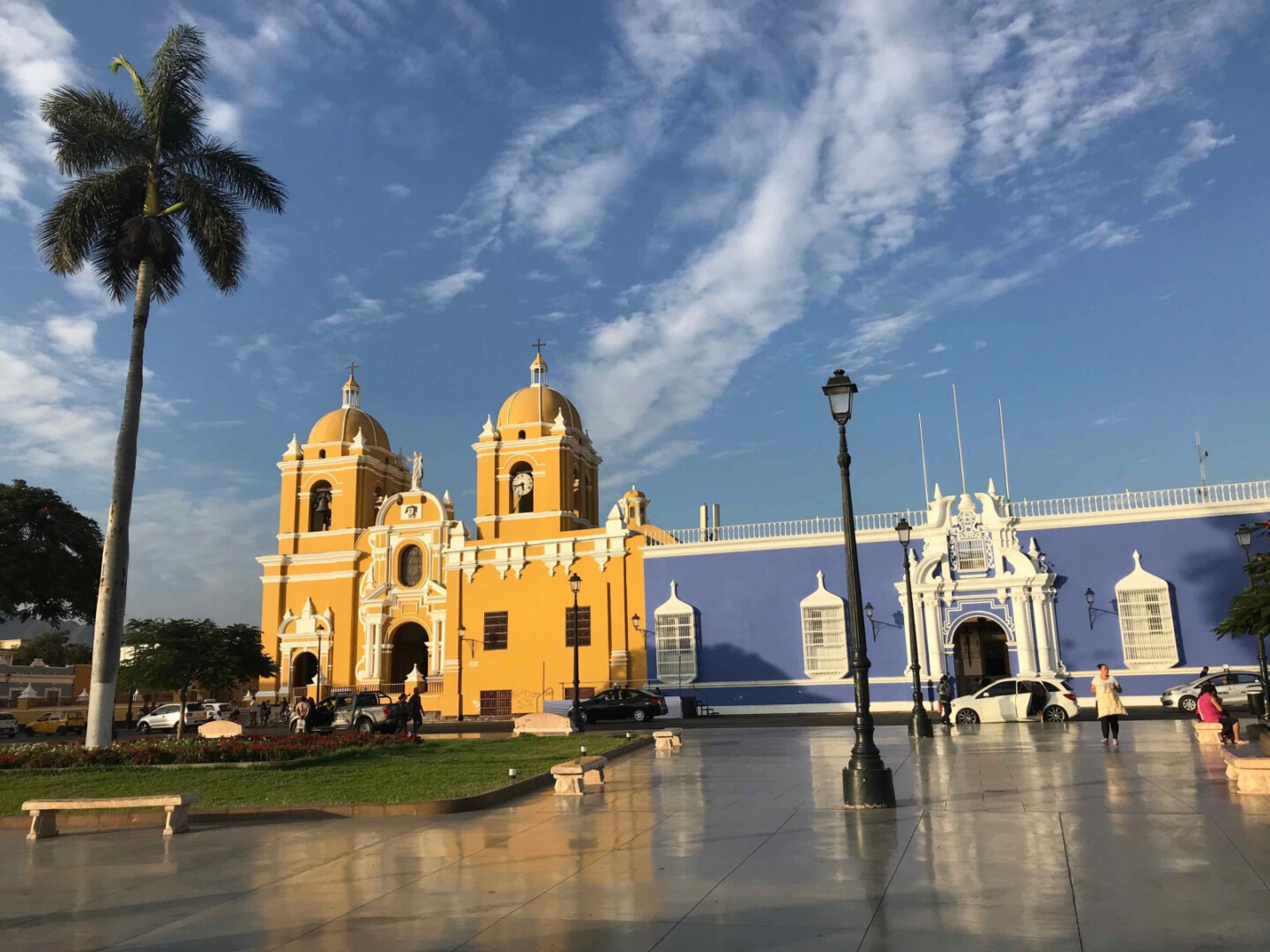
The Nazca Lines
A true marvel of human creativity, the Nazca Lines are a series of enormous geoglyphs etched into the desert floor. These mysterious and intricate designs can only be fully appreciated from the air. Take a thrilling flight over the Nazca Lines to witness these ancient wonders and ponder the theories and mysteries behind their creation.
Mancora and the Northern Beaches
For sun, sand, and surf, head to Mancora and the Northern beaches of Peru. Mancora is a popular beach town known for its laid-back atmosphere, palm-fringed beaches, and excellent waves that attract surfers from around the world. Whether you’re a seasoned surfer or a beginner looking to catch your first wave, Mancora offers an unforgettable beach experience.
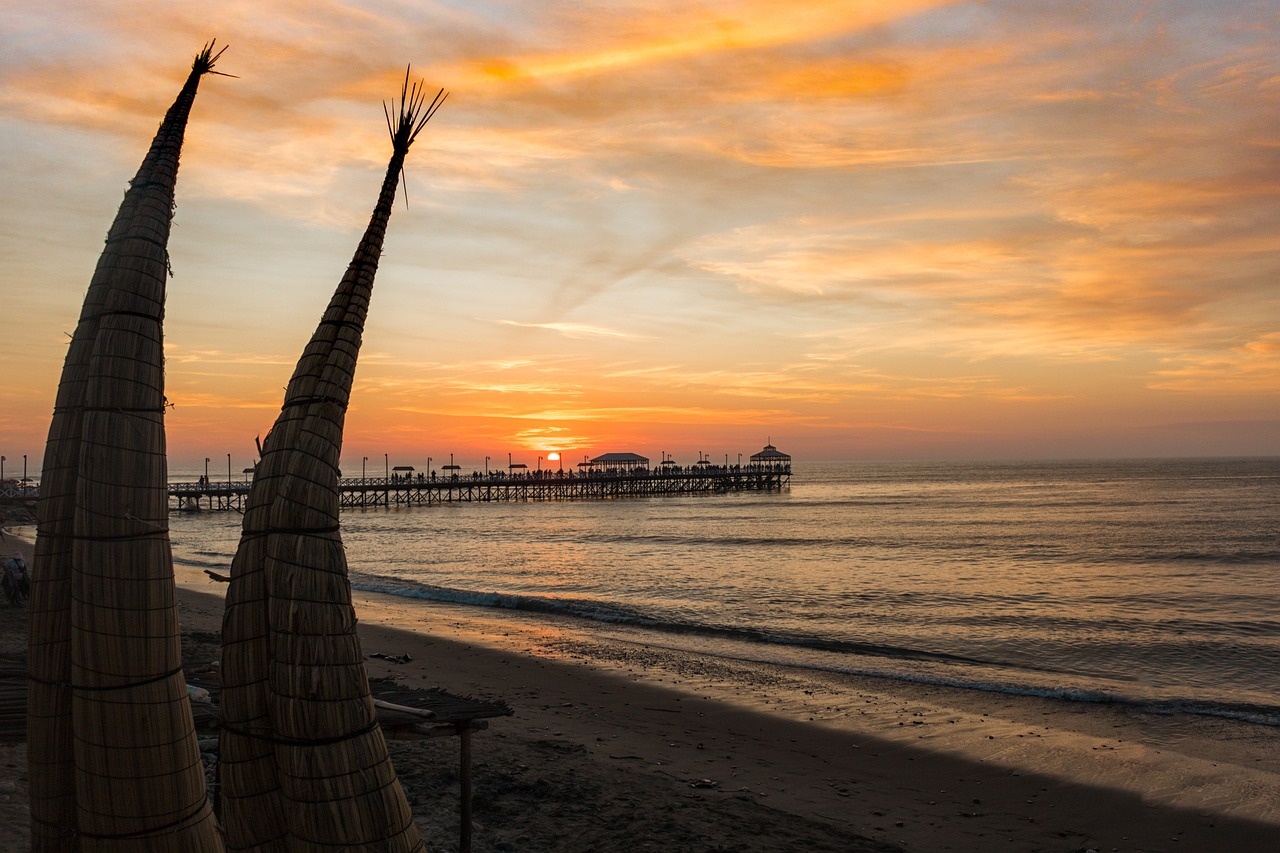
Now that you’ve explored the coastal delights, it’s time to immerse yourself in the ancient wonders of the Inca Empire in Cusco and the Sacred Valley.
Inca Empire: Cusco and Sacred Valley
As the heartland of the mighty Inca Empire, Cusco and the Sacred Valley are steeped in history, culture, and breathtaking landscapes.
Introduction to Cusco
Cusco, the former capital of the Inca Empire, is a captivating city nestled in the Andes Mountains. Its cobblestone streets, Inca ruins, and Spanish colonial architecture create a unique blend of cultures. Take a stroll through the city, visit the iconic Qorikancha Temple, and admire the impressive architecture of the Cusco Cathedral.
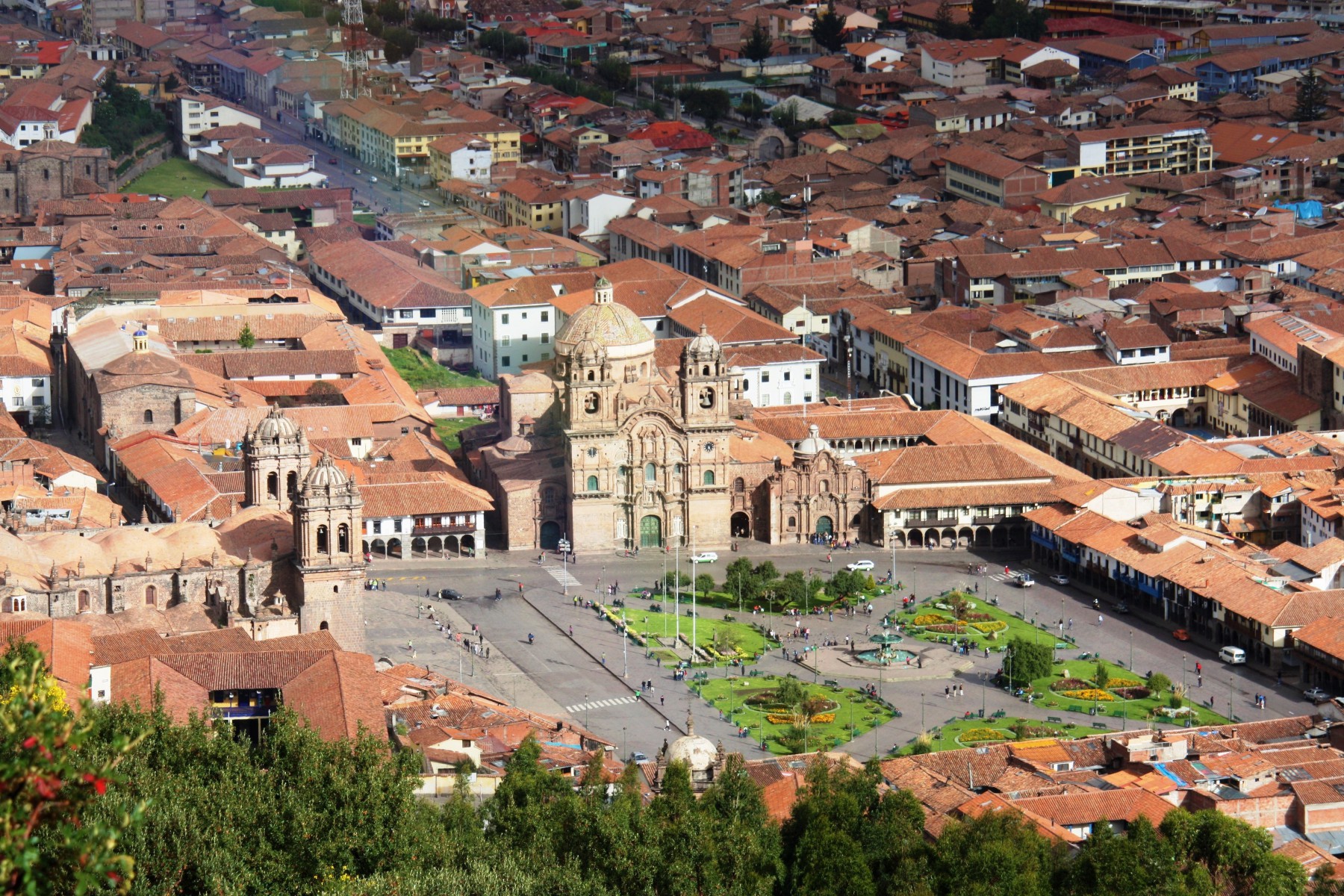
Acclimatizing to the Altitude
Cusco is located at a high altitude, so it’s important to acclimate properly to avoid altitude sickness. Take it easy upon arrival, drink plenty of water, and consider chewing coca leaves or drinking coca tea, which are traditional remedies for altitude-related symptoms.
Exploring the Sacred Valley
The Sacred Valley, also known as the Urubamba Valley, is a lush and picturesque region that was of great significance to the Inca civilization. Here, you’ll find a wealth of archaeological sites, traditional villages, and breathtaking landscapes.
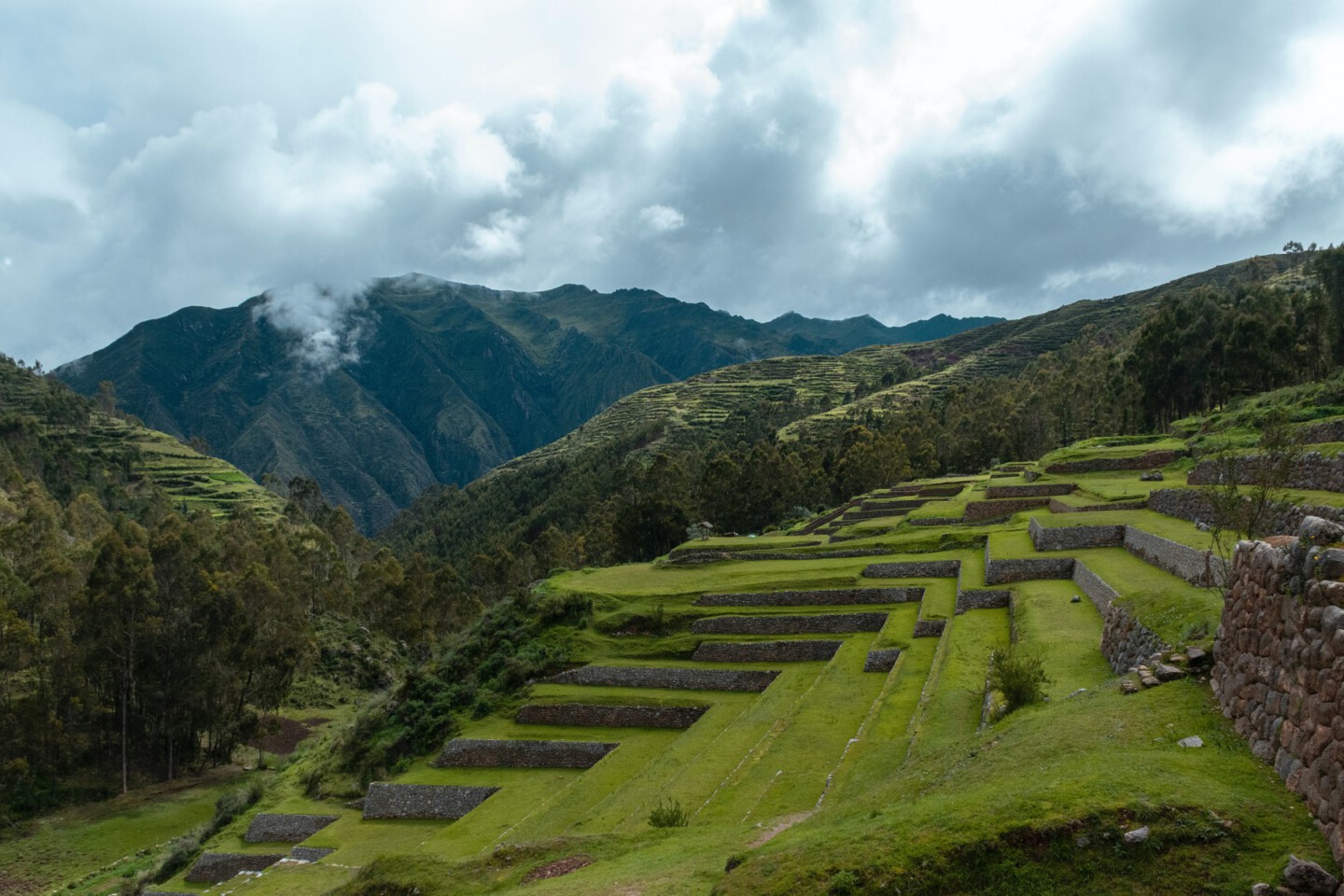
Pisac
Visit the ancient ruins of Pisac, perched high on a mountainside. Explore the terraced agricultural terraces, marvel at the precision of Inca stonework, and soak in the panoramic views of the surrounding valley.
Ollantaytambo
Continue your journey to Ollantaytambo, a living Inca town that showcases remarkable Inca stone architecture. Climb the steep terraces of the Ollantaytambo Fortress and learn about the strategic significance of this site during Inca times.
Machu Picchu
No visit to Peru would be complete without a trip to the legendary Machu Picchu, one of the New Seven Wonders of the World. This ancient Inca citadel, hidden high in the Andes, is a marvel of engineering and ingenuity.
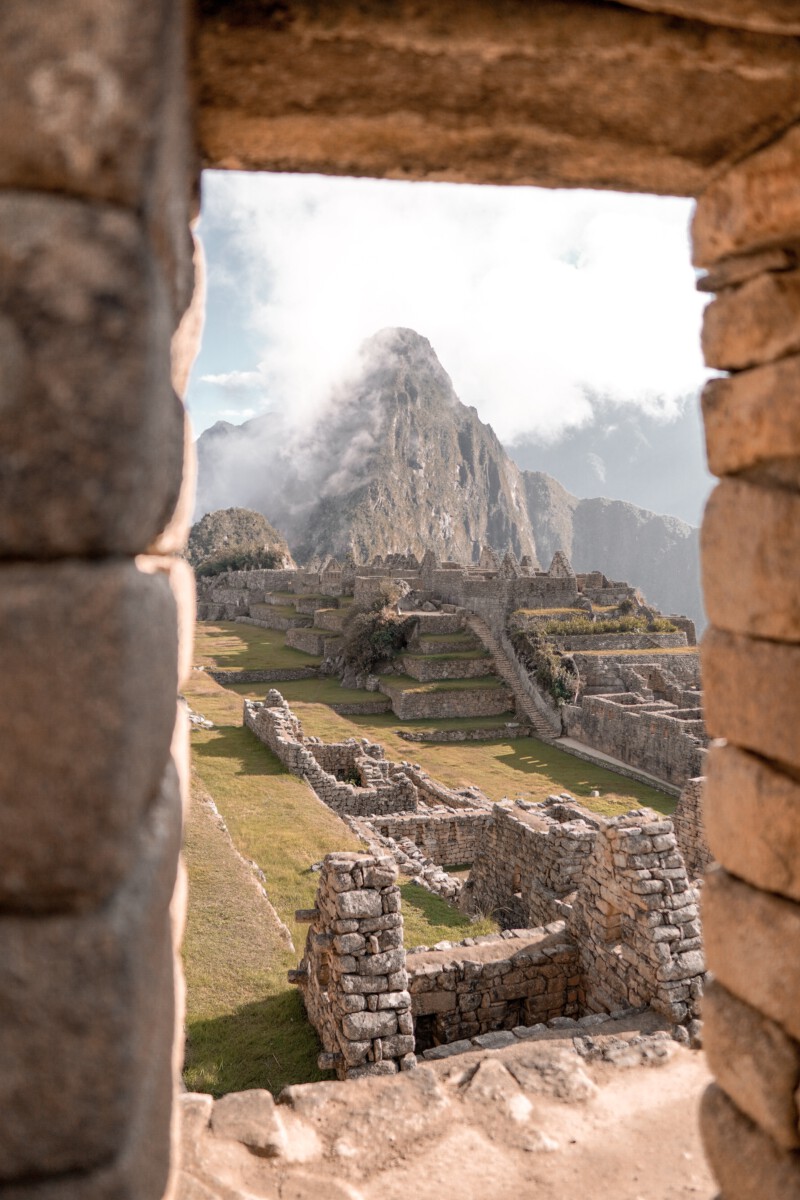
How to Get to Machu Picchu
There are several ways to reach Machu Picchu, including the classic Inca Trail trek, the scenic train ride from Cusco, or alternative hiking routes such as the Salkantay Trek or the Lares Trek. Choose the option that suits your preferences and time constraints.
Exploring the Ruins
Once you arrive at Machu Picchu, prepare to be awestruck by the beauty and mystery of this ancient site. Explore the terraces, temples, and ceremonial buildings while enjoying the panoramic views of the surrounding mountains.
Alternative Hikes and Viewpoints
If you’re looking for a different perspective, consider embarking on alternative hikes or visiting viewpoints such as the Sun Gate or the Inca Bridge. These less-crowded spots offer unique vantage points and a chance to appreciate the magnificence of Machu Picchu from different angles.
After experiencing the wonders of the Inca Empire, it’s time to venture into the enigmatic Amazon rainforest.
The Enigmatic Amazon Rainforest
Prepare to enter the lush and mesmerizing world of the Amazon rainforest, one of the most biodiverse regions on Earth.
Introduction to the Amazon
The Amazon rainforest covers a vast expanse of Peru, offering unparalleled opportunities for wildlife encounters and immersive nature experiences. This pristine ecosystem is home to countless species of plants, animals, and indigenous communities.
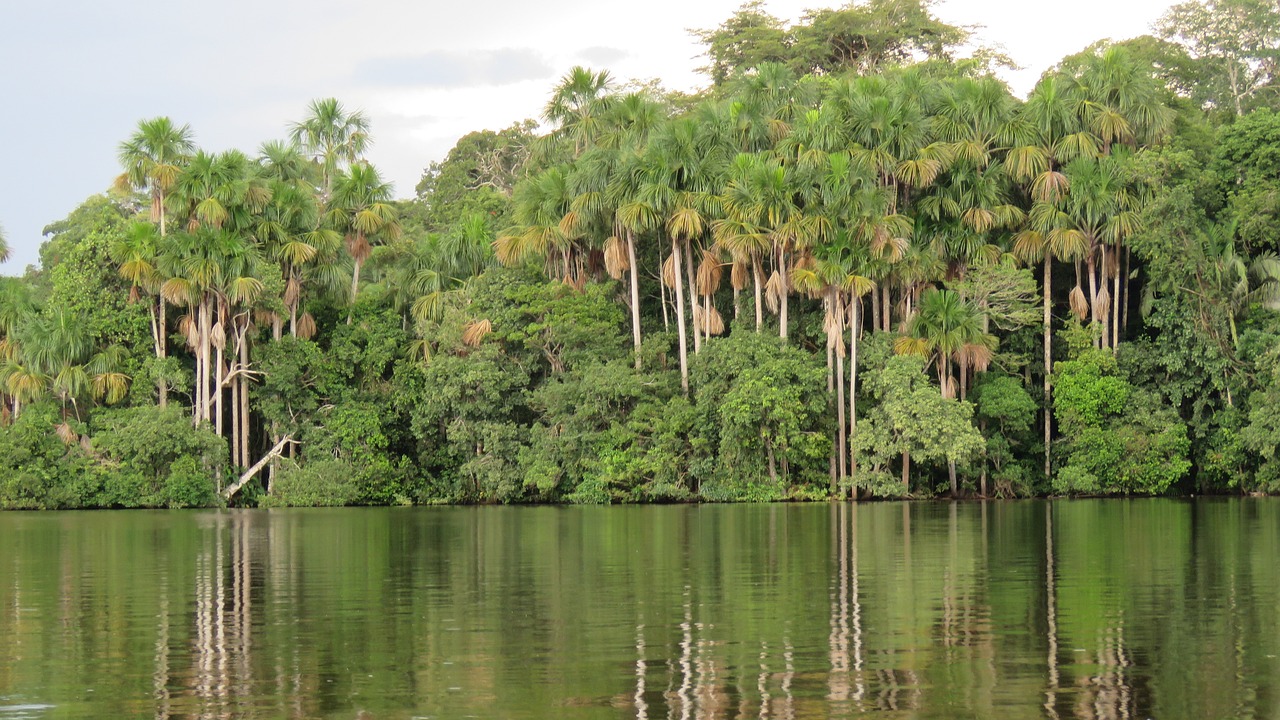
Choosing the Right Amazon Lodge
To make the most of your Amazon adventure, it’s essential to choose the right lodge that aligns with your interests and sustainability values. Research different lodges in the region, considering factors such as location, accommodations, guided excursions, and their commitment to conservation and local communities.
Wildlife and Nature Encounters
Embark on guided jungle walks and boat expeditions to discover the incredible biodiversity of the Amazon. Keep your eyes peeled for colorful birds, monkeys swinging through the treetops, elusive jaguars, and fascinating reptiles. Experienced guides will help you spot and identify the incredible array of wildlife that calls the Amazon home.
Excursions and Activities in the Amazon
Engage in a variety of activities that allow you to immerse yourself in the Amazon’s natural wonders. Take a peaceful canoe ride along the river tributaries, go fishing for piranhas, or experience the thrill of a night-time jungle excursion to witness the forest come alive after dark.
After exploring the Amazon rainforest, it’s time to head to the Peruvian Andes, where the city of Arequipa and the breathtaking Colca Canyon await.
Peruvian Andes: Arequipa and Colca Canyon
Venture into the high-altitude landscapes of the Peruvian Andes, where ancient traditions, stunning landscapes, and adrenaline-pumping adventures await.
Arequipa, the “White City”
Arequipa, known as the “White City” due to the prevalence of white volcanic stone in its architecture, is a captivating destination. Explore the historic city center with its beautiful colonial buildings, visit the Santa Catalina Monastery, and savor traditional Peruvian cuisine at local restaurants.
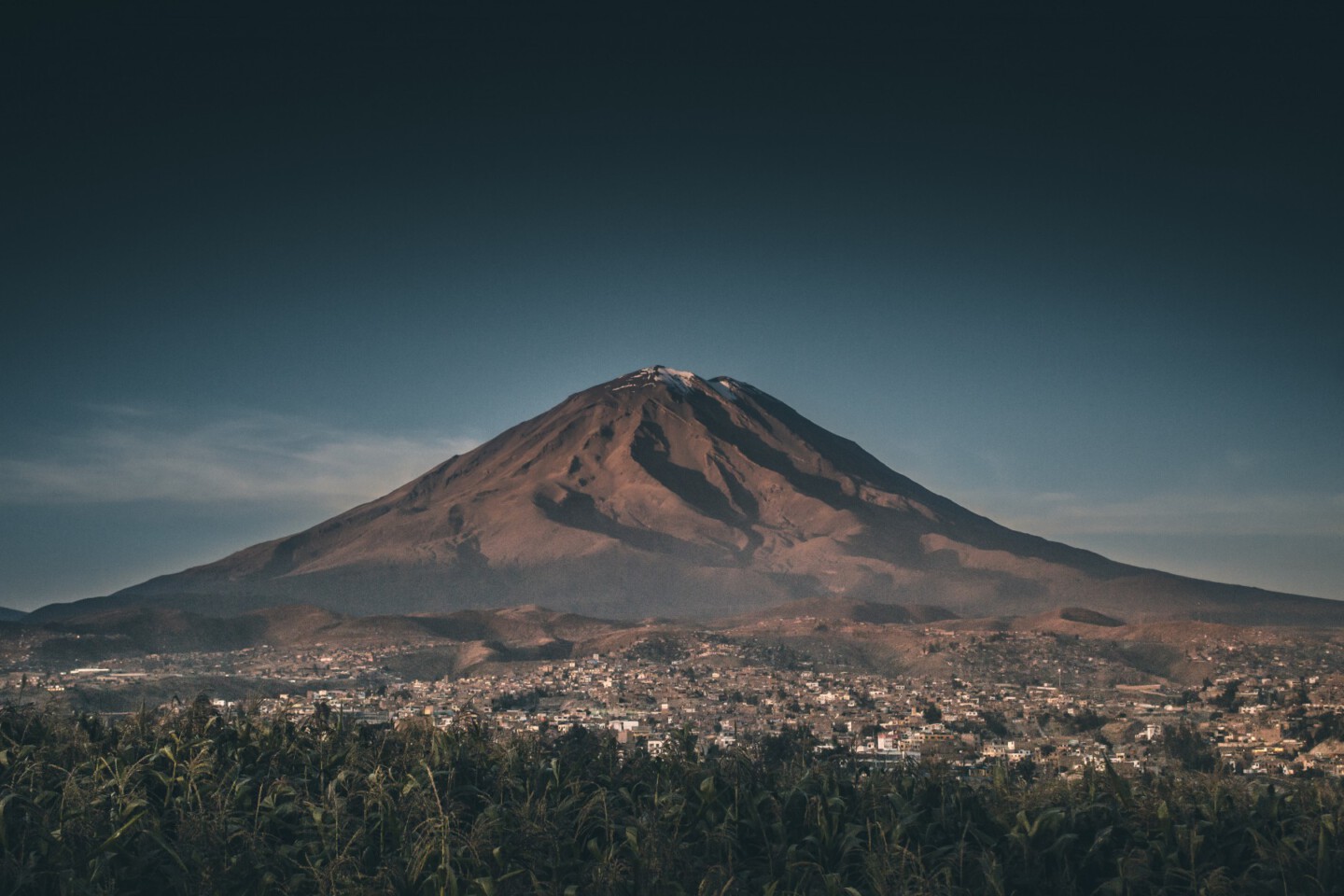
Exploring the Colca Canyon
The Colca Canyon is one of the world’s deepest canyons and offers awe-inspiring natural beauty. Marvel at the soaring condors as they glide through the canyon’s depths and enjoy breathtaking views of terraced landscapes carved by ancient civilizations.

Condor Viewpoint
Head to the Cruz del Condor viewpoint, where you can witness the majestic Andean condors up close as they gracefully soar on thermal updrafts. It’s a truly unforgettable experience that showcases the grandeur of these magnificent birds.
Traditional Villages
Take the opportunity to visit traditional villages scattered throughout the Colca Canyon. Interact with the locals, learn about their customs and traditions, and admire their vibrant textiles and intricate craftsmanship.
Adventure Activities in the Andes
For adrenaline seekers, the Peruvian Andes offer a wide range of thrilling adventures. Go hiking or mountain biking through breathtaking landscapes, embark on multi-day treks to remote villages, or try your hand at rock climbing and white-water rafting.
From the heights of the Andes, we now descend to the beauty of Lake Titicaca and the cultural heritage of Puno.
Lake Titicaca and Puno
Discover the serene beauty of Lake Titicaca, the highest navigable lake in the world, and explore the vibrant culture of Puno.
Discovering Lake Titicaca
Lake Titicaca, straddling the border between Peru and Bolivia, is a place of tranquility and natural beauty. Take a boat tour to explore the floating Uros Islands, where indigenous communities live on man-made islands constructed from totora reeds.
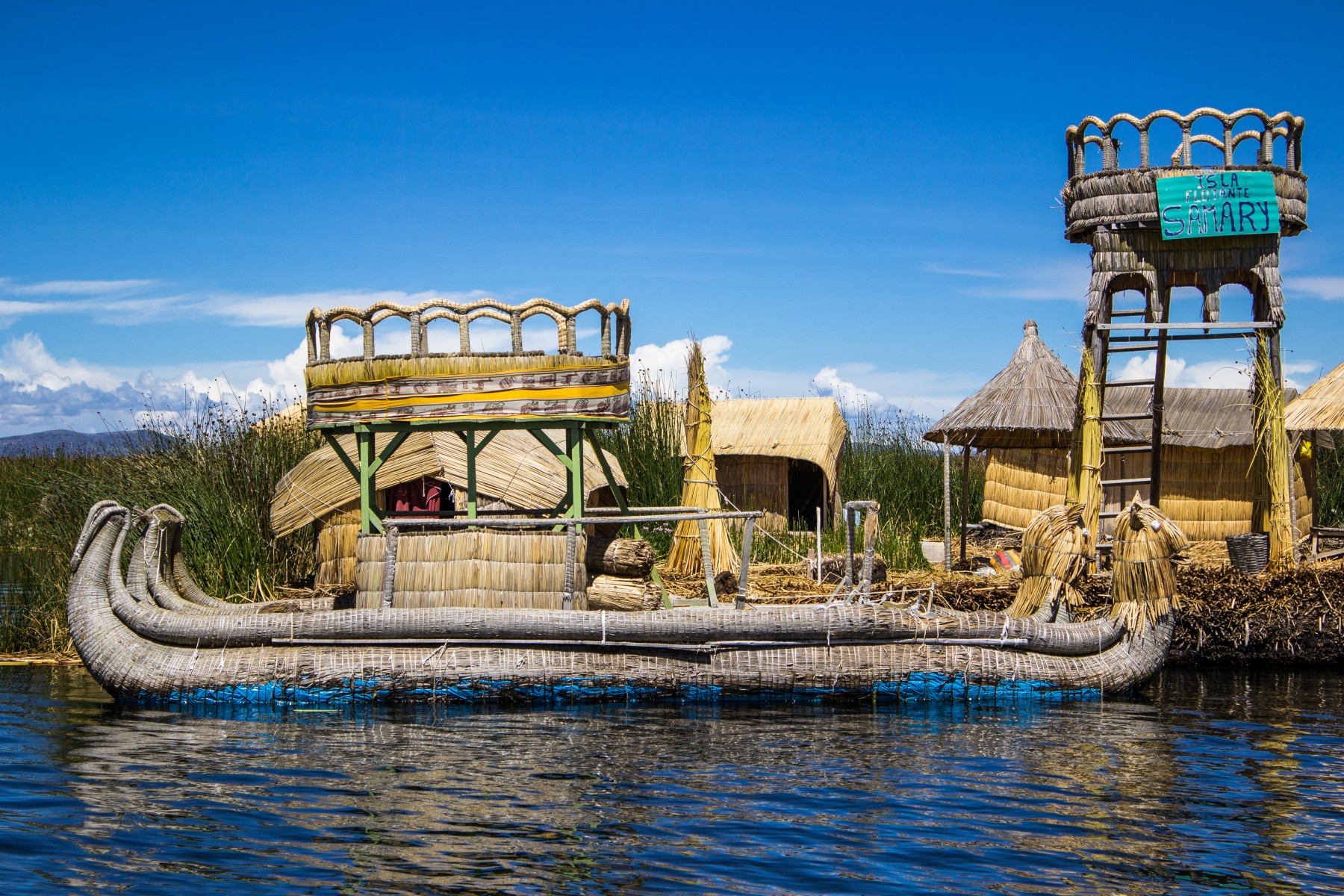
Uros Floating Islands
Step foot on the unique Uros Floating Islands and learn about the traditional lifestyle and customs of the Uros people. Experience a ride on a traditional reed boat and witness the incredible ingenuity required to build and maintain these floating communities.
Taquile Island and Amantani Island
Continue your journey to Taquile Island and Amantani Island, where time seems to stand still. Immerse yourself in the local culture, interact with the islanders, and savor the tranquility of these remote island communities. Homestay experiences are available, allowing you to engage with local families and gain a deeper understanding of their daily lives.
Puno and Its Cultural Heritage
The city of Puno, situated on the shores of Lake Titicaca, is a hub of cultural richness. Explore its vibrant markets, where you can find beautifully crafted textiles and traditional handicrafts. Don’t miss the opportunity to witness the colorful celebrations of traditional festivals, such as the Virgen de la Candelaria.
Now let’s uncover the mysteries of the Nazca Lines and delve into the lesser-known treasures of the Northern Highlands.
The Mysterious Nazca Lines
Prepare to be amazed by the enigmatic Nazca Lines, an extraordinary testament to ancient civilizations and their remarkable artistic achievements.
Introduction to the Nazca Lines
The Nazca Lines, etched into the arid desert plains of southern Peru, are massive geoglyphs that depict various figures, including animals, plants, and geometric shapes. These intricate designs, created by the Nazca culture thousands of years ago, are best viewed from the air.
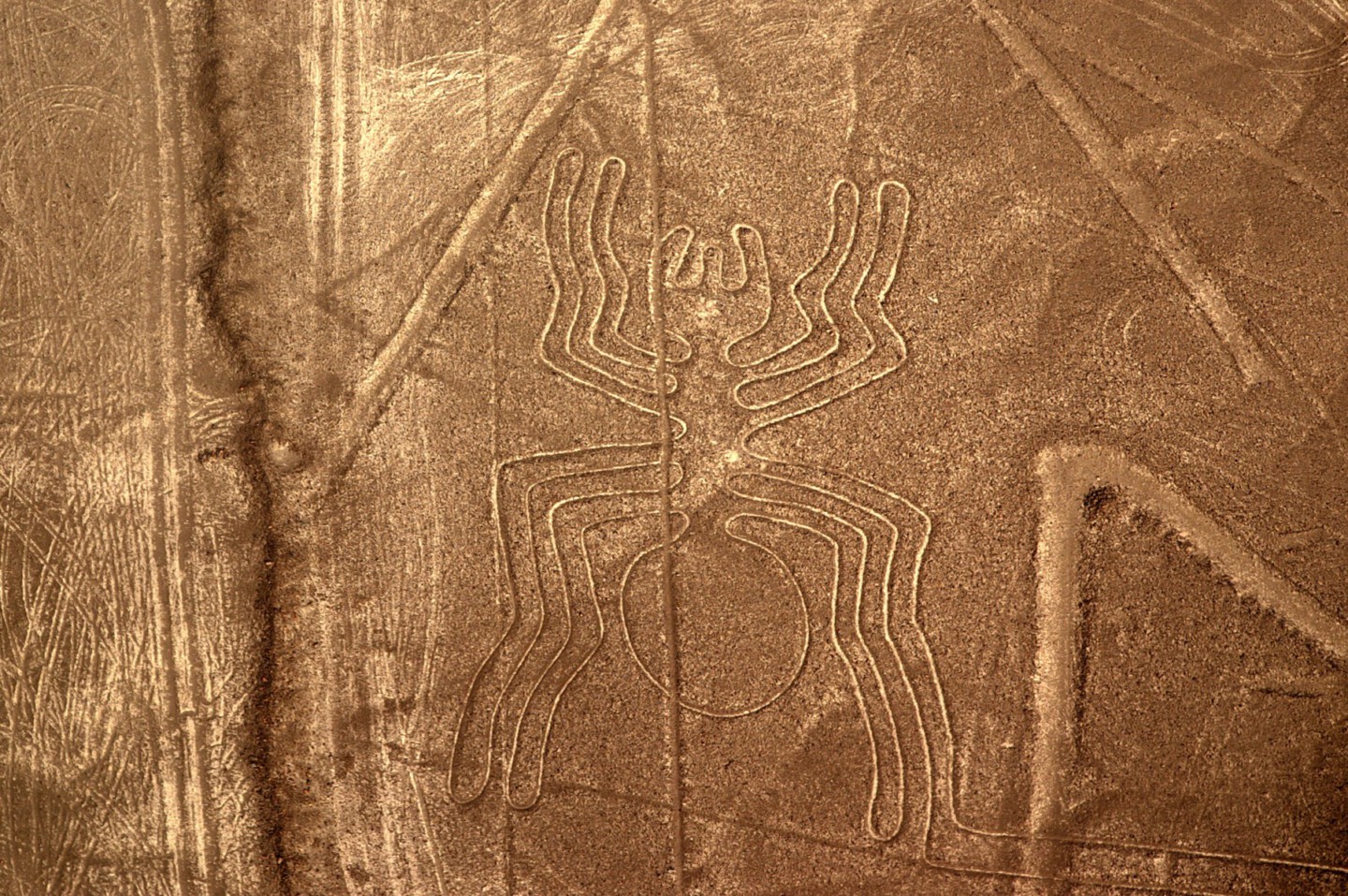
Viewing Options and Flights
To witness the awe-inspiring Nazca Lines, you have the option of taking a scenic flight from Nazca or Pisco. These flights provide a unique vantage point, allowing you to appreciate the scale and intricacy of the geoglyphs.
Theories and Mysteries Behind the Lines
The purpose and meaning of the Nazca Lines continue to intrigue researchers and visitors alike. From astronomical alignments to ceremonial paths, various theories attempt to unravel the secrets behind these ancient engravings. Marvel at their precision and speculate on the motivations that led to their creation.
From the mystique of the Nazca Lines, we now journey to the off-the-beaten-path destinations of the Northern Highlands.
Off-the-Beaten-Path: Northern Highlands
Explore the lesser-known gems of the Northern Highlands, where ancient ruins, breathtaking waterfalls, and intriguing archaeological sites await.
Chachapoyas and Kuelap Fortress
Chachapoyas, nestled in the cloud forests of northern Peru, is a region steeped in history and natural beauty. Visit the formidable Kuelap Fortress, an ancient citadel perched atop a mountain. Marvel at the massive stone walls, intricate carvings, and panoramic views of the surrounding landscapes.
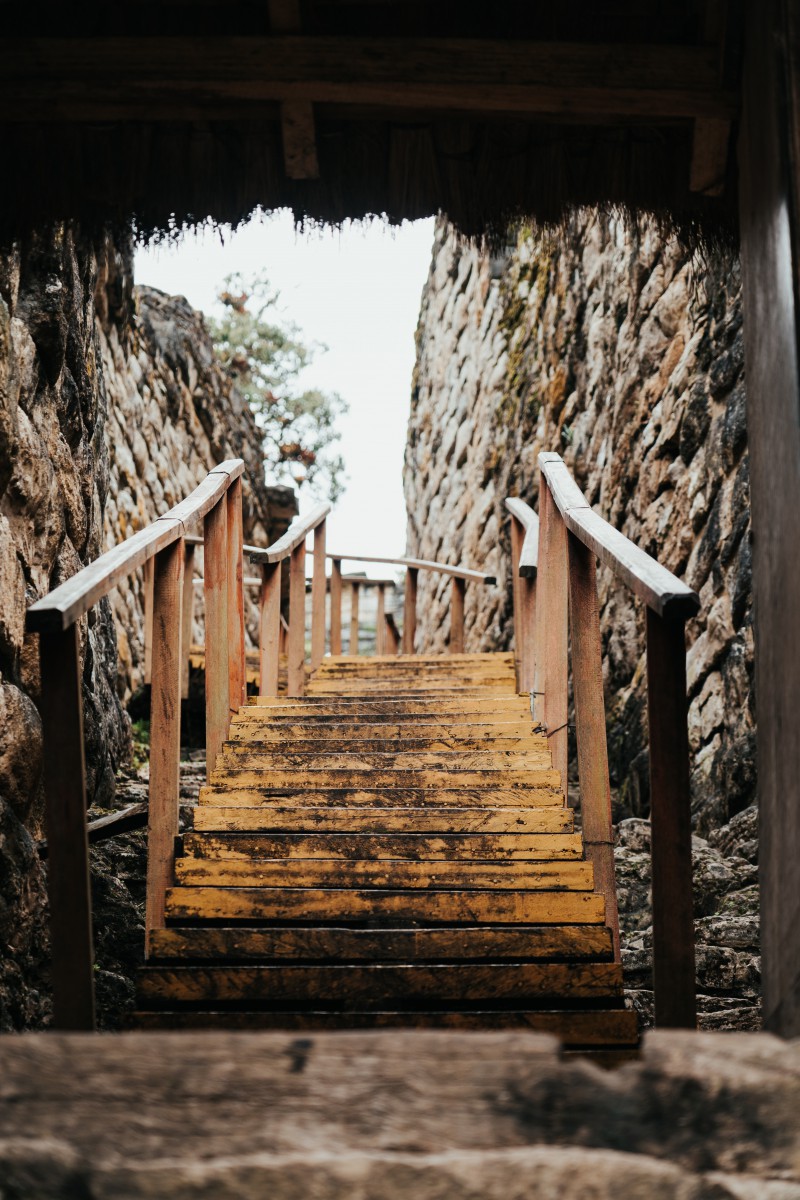
Gocta Waterfall
Prepare to be enchanted by the majestic Gocta Waterfall, one of the tallest waterfalls in the world. Embark on a hike through lush rainforest, listening to the sounds of nature, until the breathtaking sight of the waterfall reveals itself.
Leymebamba Museum
Discover the fascinating secrets of the Leymebamba Museum, located in a remote mountain village. This small but remarkable museum houses an impressive collection of mummies and artifacts from the Chachapoya culture, providing insights into their way of life and burial customs.
Now, let’s head back to the coastline and explore the surfing spots and beautiful beaches of the Northern Coast.
Surfing and Beaches: Northern Coast
For surf enthusiasts and beach lovers, the Northern Coast of Peru offers a paradise of world-class waves and idyl
lic coastal destinations.
Surfing Spots in Peru
Peru’s Northern Coast is a haven for surfers, boasting excellent waves that attract surfers from around the globe. From beginners to experienced riders, there are surfing spots suitable for all skill levels. Chicama, known for its exceptionally long left-hand wave, holds the record for the world’s longest surfable wave.
Chicama, the World’s Longest Left-Hand Wave
Surfing in Chicama is a dream come true for wave riders. Brace yourself for a thrilling experience as you ride the incredibly long left-hand wave that seems to go on forever. Whether you’re a seasoned surfer or a novice, catching a wave in Chicama is an unforgettable adventure.
Beach Towns and Resorts
Along the Northern Coast, you’ll find charming beach towns and resorts that cater to a variety of interests. Relax on pristine sandy beaches, soak up the sun, and indulge in delicious seafood. Popular beach towns include Máncora, Zorritos, and Punta Sal, where you can unwind and enjoy the laid-back coastal vibes.
After riding the waves, it’s time to immerse yourself in the vibrant traditional festivals and cultural experiences that Peru has to offer.
Traditional Festivals and Cultural Experiences
Peru is a land of rich cultural traditions and colorful celebrations. Attending traditional festivals allows you to witness the country’s vibrant customs and experience its deep-rooted heritage.
Inti Raymi, the Festival of the Sun
Inti Raymi, an ancient Inca festival, celebrates the winter solstice and pays homage to the Sun God. Cusco is the best place to experience this grand celebration, which features elaborate processions, traditional music, and ceremonial rituals. Join the festivities and be captivated by the colorful costumes and vibrant energy.
Qoyllur Rit’i, the Snow Star Festival
High in the Andes, the Qoyllur Rit’i festival takes place, combining Catholic and indigenous Andean traditions. This unique celebration gathers thousands of pilgrims who hike to the Sinakara Valley, carrying large crosses and paying homage to the Snow Star, an important mountain deity. Immerse yourself in the spiritual ambiance and witness the cultural fusion.
Corpus Christi in Cusco
Corpus Christi is a religious festival celebrated across Peru, but the festivities in Cusco are particularly grand. The Plaza de Armas comes alive with vibrant processions, traditional dances, and music. Admire the intricately decorated balconies and experience the fervent religious devotion that permeates the city.
Peruvian Music and Dance
Peruvian music and dance are deeply intertwined with the country’s cultural fabric. From the lively rhythms of marinera to the haunting melodies of traditional Andean music, you’ll be captivated by the diverse musical expressions found throughout Peru. Attend live performances, join dance workshops, and let the vibrant beats move your soul.
Now, let’s shift our focus to the culinary delights that await in Peru, a true foodie’s paradise.
Peruvian Cuisine: Foodie’s Paradise
Peruvian cuisine has gained international recognition for its unique flavors, fusion of cultural influences, and use of fresh local ingredients. Prepare your taste buds for a culinary adventure like no other.
Overview of Peruvian Cuisine
Peruvian cuisine is a delightful blend of indigenous ingredients, traditional cooking techniques, and immigrant influences. It draws inspiration from the country’s diverse geography, including the coast, mountains, and Amazon rainforest. The result is a diverse and flavorful culinary landscape that will leave you craving more.
Famous Peruvian Dishes and Beverages
Indulge in famous Peruvian dishes that have captured the hearts and palates of food enthusiasts worldwide. From ceviche, a refreshing dish of marinated seafood, to lomo saltado, a flavorful stir-fry combining beef, onions, and tomatoes, each bite is a celebration of vibrant flavors. Don’t forget to sample quintessential Peruvian beverages like chicha morada, a purple corn drink, and the beloved Pisco Sour cocktail.
Cooking Classes and Food Tours
To fully immerse yourself in Peru’s gastronomic delights, consider taking a cooking class or joining a food tour. Learn to prepare traditional dishes under the guidance of skilled chefs, visit local markets to source fresh ingredients, and savor the fruits of your labor. These culinary experiences offer a deeper understanding of Peruvian cuisine and the passion behind it.
Now that we’ve satisfied our taste buds, let’s move on to practical tips and travel essentials to ensure a smooth and enjoyable trip.
Practical Tips and Travel Essentials
To make the most of your journey through Peru, it’s essential to be well-prepared and equipped with the right information. Here are some practical tips and travel essentials to keep in mind.
Safety Tips for Traveling in Peru
Peru is generally a safe country for travelers, but it’s always wise to take precautions. Be mindful of your belongings, avoid displaying expensive items, and use reliable transportation. Stay informed about current safety conditions and follow local advice to ensure a safe and enjoyable trip.
Transportation Options Within Peru
Peru offers various transportation options to help you navigate the country. Domestic flights are available for longer distances, while buses are a popular choice for intercity travel. In major cities, taxis and rideshare services provide convenient transportation. Research the options that best suit your itinerary and budget.
Health and Medical Considerations
Before traveling to Peru, consult your healthcare provider or a travel clinic to ensure you are up to date on routine vaccinations. Depending on the areas you plan to visit, additional vaccinations or preventive medications, such as those for yellow fever or altitude sickness, may be recommended. It’s also essential to have travel insurance that covers medical emergencies.
Packing Essentials for Peru
Packing smartly will enhance your comfort and convenience while traveling in Peru. Essentials include comfortable clothing suitable for various climates, sturdy walking shoes, sunscreen, insect repellent, a reusable water bottle, and a daypack for carrying your belongings during excursions. Additionally, don’t forget travel adapters and a basic first aid kit.
As responsible travelers, let’s explore the concept of sustainable travel in Peru and discover ways to minimize our impact on the environment and support local communities.
Sustainable Travel in Peru
Peru’s natural and cultural treasures are fragile, and it’s important to be mindful of our impact as travelers. Embracing sustainable travel practices allows us to preserve the country’s beauty and support local communities.
Responsible Tourism Practices
Practice responsible tourism by respecting local customs, traditions, and cultural heritage. Support businesses and tour operators that prioritize sustainable practices, such as waste management, energy conservation, and supporting local communities.
Community-Based Tourism Initiatives
Engage in community-based tourism initiatives that provide meaningful interactions with local communities and contribute to their economic empowerment. Participate in homestay programs, visit local cooperatives, and purchase handicrafts directly from artisans to ensure your tourism dollars benefit the communities you visit.
Eco-Friendly Accommodations
Choose eco-friendly accommodations that prioritize sustainable practices, such as energy and water conservation, waste management, and support for local communities. Look for certifications or affiliations that indicate the establishment’s commitment to sustainability.
As we wrap up our exploration of sustainable travel, let’s not forget to bring a piece of Peru back home through unique souvenirs and ethical shopping.
Unique Souvenirs and Shopping
Peru offers a plethora of unique souvenirs and shopping experiences that allow you to support local artisans and take home meaningful mementos of your journey.
Handicrafts and Textiles
Peru is renowned for its exquisite handicrafts and textiles, which showcase the country’s rich cultural heritage. From intricately woven textiles to beautifully crafted pottery and silver jewelry, you’ll find a wide range of handcrafted treasures. Visit local markets and artisan workshops to discover one-of-a-kind pieces that reflect the artistic traditions of different regions.
Markets and Shopping Areas
Peru’s markets are a vibrant tapestry of colors, scents, and sounds. Explore bustling markets like the Mercado Central in Lima, the Pisac Market in the Sacred Valley, or the San Pedro Market in Cusco. These bustling marketplaces offer an array of products, from fresh produce and spices to handicrafts and souvenirs.
Ethical Souvenirs
When shopping for souvenirs, consider choosing ethically sourced and sustainable products. Look for items made from natural and eco-friendly materials, supporting fair trade practices and benefiting local communities. By purchasing ethical souvenirs, you can contribute to the preservation of traditional crafts and support the livelihoods of local artisans.
Before bidding farewell to Peru, let’s explore language and communication tips that can enhance your travel experience and foster meaningful connections with the locals.
Language and Communication
While traveling in Peru, a basic knowledge of Spanish can greatly enhance your experience and facilitate interactions with the local people. Here are some language and communication tips to help you navigate your way through the country.
Basic Spanish Phrases for Travelers
Learning a few basic Spanish phrases can go a long way in communicating with locals. Master greetings, polite expressions, and simple phrases for ordering food, asking for directions, and expressing gratitude. Locals appreciate the effort, and it can lead to more meaningful and enjoyable interactions.
Language Tips for Getting Around
When traveling within Peru, it’s helpful to know key transportation-related vocabulary and phrases. Familiarize yourself with words and phrases related to airports, bus stations, taxis, and public transportation to navigate smoothly and effectively.
As we conclude this comprehensive travel guide to Peru, let’s recap the highlights and remind ourselves that an unforgettable adventure awaits.
Frequently asked questions about peru
What is the best time to visit Peru?
How do I get to Machu Picchu?
What should I pack for my trip to Peru?
Is it safe to travel in Peru?
What are some must-try Peruvian dishes?
Additional Resources
To further enhance your knowledge and prepare for your trip to Peru, here are some recommended books, documentaries, websites, and travel resources:
Books
- “Turn Right at Machu Picchu: Rediscovering the Lost City One Step at a Time” by Mark Adams
- “The Peru Travel Guide: Discover Ancient Ruins, Breathtaking Landscapes, and Vibrant Culture” by Wanderlust Pocket Guides
- Documentaries:
- “Peru: A Hidden Treasure” by National Geographic
- “Machu Picchu Decoded” by Nova
Websites
- Peru Travel
- Lonely Planet Peru
- Peru Travel Advisory – U.S. Department of State
- Peru Tourism Official Website
- Inca Trail Permits – Ministry of Culture of Peru
Conclusion
In conclusion, Peru is a captivating destination that offers a perfect blend of ancient wonders, breathtaking landscapes, vibrant cities, and culinary delights.
From exploring the mystical ruins of Machu Picchu to immersing yourself in the vibrant culture of Lima and savoring the flavors of Peruvian cuisine, this South American gem has something for every traveler.
Plan your unforgettable adventure in Peru today and share your experiences with us on social media or leave a comment below!